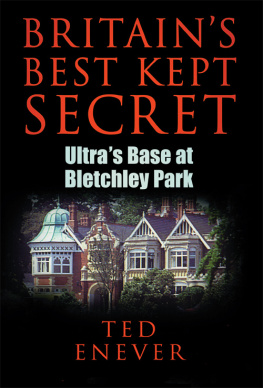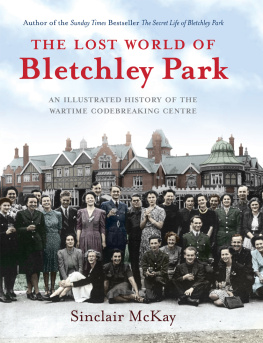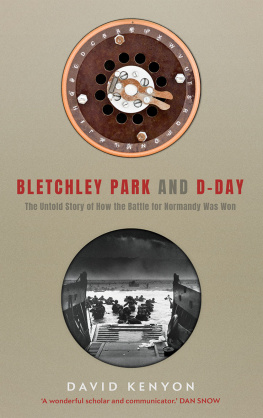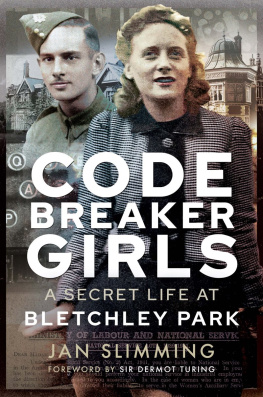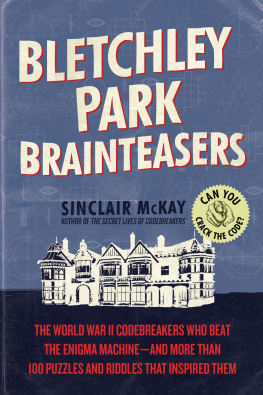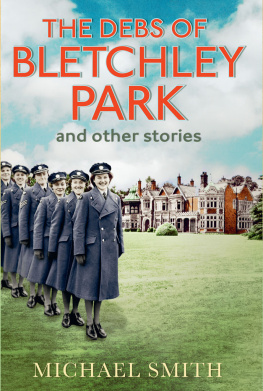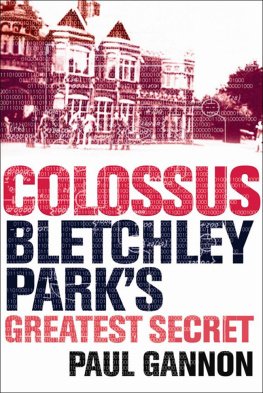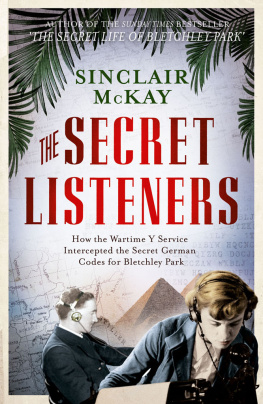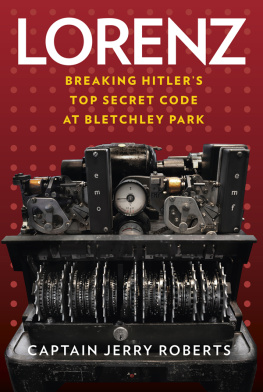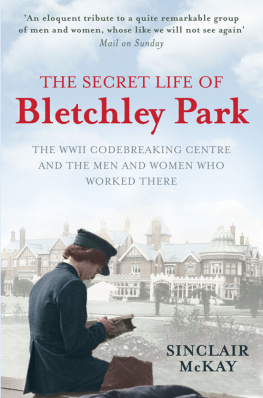Secret Duties of a Signals Interceptor
Dedication
To my husband Jean-Marcel Nater, in gratitude for his constant patience, love and understanding
Secret Duties of a Signals Interceptor
Working with Bletchley Park, the SDS and the OSS
or A Long Time to Hope
Jenny Nater
First published in Great Britain in 2016 by
Pen & Sword Aviation
an imprint of
Pen & Sword Books Ltd
47 Church Street
Barnsley
South Yorkshire
S70 2AS
Copyright Jenny Nater 2016
ISBN 978 1 47388 712 1
eISBN 978 147388 714 5
Mobi ISBN 978 147388 713 8
The right of Jenny Nater to be identified as the Author of this Work has been asserted by her in accordance with the Copyright, Designs and Patents Act 1988.
A CIP catalogue record for this book is available from the British Library
All rights reserved. No part of this book may be reproduced or transmitted in any form or by any means, electronic or mechanical including photocopying, recording or by any information storage and retrieval system, without permission from the Publisher in writing.
Pen & Sword Books Ltd incorporates the imprints of Pen & Sword Archaeology, Atlas, Aviation, Battleground, Discovery, Family History, History, Maritime, Military, Naval, Politics, Railways, Select, Transport, True Crime, and Fiction, Frontline Books, Leo Cooper, Praetorian Press, Seaforth Publishing and Wharncliffe.
For a complete list of Pen & Sword titles please contact
PEN & SWORD BOOKS LIMITED
47 Church Street, Barnsley, South Yorkshire, S70 2AS,
England E-mail:
Website: www.pen-and-sword.co.uk
Authors Biography
Jenny Nater lives in East Devon but was born in the United States to American parents two years after the end of World War I. Her parents divorced and moved to England, placing her in boarding school when she was five. At seventeen, in 1937, she was sent to a progressive co-educational school in Switzerland run by German Jewish refugee teachers who had fled Nazi Germany. Here the young Jenny not only learned the German language, but also began to understand the political situation of the time and the approaching threat of National Socialism. Because of her knowledge of German, in 1941 she was accepted into the WRNS as a signals interceptor, and served on the Dover cliffs, monitoring German Naval radio traffic in the Channel. There she met her first great love Rick Cornish, 27, commanding officer of a Motor Torpedo Boat of the Coastal Forces. The letters between the two that make up much of this book are a personal record of the Second World War.
Ah love, let us be true
To one another! for
we are here as on a darkling plain
Swept with confused alarms of struggle and flight
Where ignorant armies clash by night.
from Dover Beach by Matthew Arnold
Prologue
W hile in hospital in 2008, without food but on a water and glucose drip for three weeks, I had what seemed at the time, an arresting experience. I would be awake most of the night sitting up in bed writing scribbling in the semi-darkness. It seemed to me firstly that I had found the answer to all of mankinds problems and that I was also able to remember a great many incidents from my very early childhood. I decided to try and record these early memories, or rather sensations, for my children and grandchildren. These remembered sensations are from the time before we left America pre 1925. I will try and write what I actually remember not reminiscences from family photographs or anecdotes.
I was born in the United States of American parents. My fathers maternal side of the family had left England in 1645 during a time of religious persecution; they were Quakers, and like so many of these, they settled in Massachusetts, in their case Nantucket. Our first recorded ancestor, David OKillia, both of whose parents became ill and died on the voyage over the Atlantic, had taken their son and a bag of money to the captain of the ship and asked him to see to the safety of the boy and his inheritance. By great good luck the captain was an honest man, and on reaching America took young OKillia and his money to a bank. A generation or two later the local bank notes bore the portrait of his decendant Isaiah Crowell, my great great grandfather. His daughter Phoebe Kelly Crowell married Thomas Brown and their daughter Alice, my paternal grandmother, married Thomas Gill.
One of my earliest picture memories is of my great aunt Anna Maria Browns house in Canaan, Connecticut. She had a Scots cook and I remember climbing onto a stool and from there onto the white counter to get at the cookie jar. They were oatmeal cookies and I loved them. Another vivid memory is of very, very yellow scrambled eggs on blue and white plates. The driveway was a mixture of pebbles and small blue-green stones (copper sulphate?) with which I played for hours. Inside the house, under the bookcase, was a low white cupboard full of magical toys. I was only allowed to look at these when an adult was with me. There was a mechanical ladybird that crawled and flapped its wings, a jack-in-the-box, a little monkey on a stick who did somersaults, and a beautiful box of Jack Straws. I was not allowed to touch these, but they are one of the things I have inherited from my father. Most of the exquisitely carved sticks are still intact. They were carved on long picnics in the Connecticut countryside. There is a bottle of Tokay, a book, Diana of the Crossways , the goose that laid the golden egg, and the egg itself; a heart dated 1899; a delicately carved pen with the initials AMB; a thin, fine, fretsaw; a furled umbrella and a quarter inch globe with the countries of the world quite recognisably depicted, among other things.
Anna Maria was a spinster, her younger sister Ella also. Of the three Brown sisters, only my Grandmother, Alice, married. Ella is a benign presence dimly remembered, except for the wonderful occasion once a year when she organised a Halloween party in the summer house for all the children. The building smelled of hot, sun baked cypress wood. The fall sunlight fell in beams on the wooden floor, in the middle of which stood an enormous pumpkin. It was hollowed out and many thin silk ribbons cascaded over its sides. Each child was given a ribbon, and the piano played the Pumpkin song. We all danced around singing until the signal was given to pull our ribbons, and there on the end of each ribbon was a toy. The last game was to find as many walnuts as possible in their hiding places and the ultimate prize was a golden walnut. (Years later my aunt Laura and I tried to find the words and tune of the Pumpkin song, but despite searching in Pheobe Kelly Browns blue nail studded box under the piano, we never found them). Great aunt Ella died very young of tuberculosis. She was a talented painter, and had studied and painted in Paris at the same time as Mary Cassatt, a brave and unusual thing to do in that day and age. The Cassatt family were all in Paris together. They had gone there originally for the sake of their youngest daughters health. My great aunt was alone. I wish that I had known her. She and great aunt Annie were taught painting by the familys companion, Miss Fidelia Bridges, whose water colours are very fine. I was told by my parents, both of whom loved and admired her, that she had a sad love affair with Lafkadio Hearn, who married a Japanese woman and never returned from Japan, or recovered from his complete fascination with all things Japanese. An account of his life and experiences in Ireland, England, the Continent, the Caribbean and Japan can be found on the Internet.


